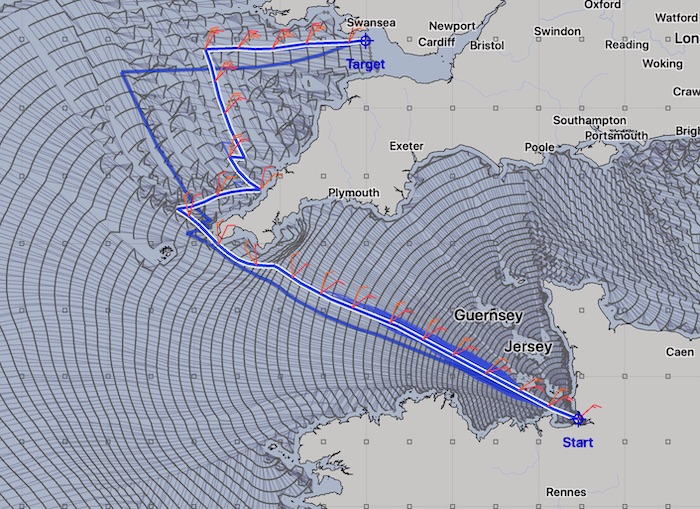Weather forecast accuracy over short intervals, perhaps 2 to 3 days, is quite good. As you examine longer weather forecasts, the uncertainty in the accuracy of those forecasts grows and grows.
Along with uncertainty growing over time through a forecast, there is also uncertainty in the actual winds encountered at sea. For example, many weather models have a wind gust parameter available. Wind gusts may be close to the 10m wind speed, or quite a lot larger. The difference between wind gust and 10m wind speed is another measure of uncertainty.
The approach adopted by all major weather centers to the uncertainty in weather forecasts is for their forecasters to examine multiple forecast models, compare them, and apply judgement to come up with their best estimate of what to expect. This approach can also be used and applied to weather routing.
LuckGrib is able to help you in an uncertain weather world.
Wind, wind gusts.
Many weather models provide a wind gust parameter. Wouldn’t it be interesting to see how what the weather router comes up with if it creates a route using the wind gust speeds?

Which of these two paths is the one you should follow?
This is perhaps the crucial question that applies to all weather routing systems. In a system where there are uncertainties in weather forecasts and vessel performance modeling, should you follow any particular path that is generated?
Note that this passage is only 2 1/2 days long, which is in the region where we can expect fairly accurate forecasts. However, even within this time range, where there is good forecast data available, the two paths are not the same.
Note that the wind gust solution is not meant to be a realistic possibility for a path you could sail. Gusts come and go, we do not experience steady wind speeds for the wind gust parameter the forecast models are generating. However, viewing a wind gust solution, along with the normal wind solution, may give you some sense of the uncertainty in the weather.
While the paths created have different shapes, they are really not all that different. The duration of the two paths is quite similar, only 5 hours separating them. The initial portions of both paths are close. After turning north around Cornwall there is an upwind portion to the route, and the two paths have different optimal paths beyond that point.
The maximum true winds encountered along the paths (10m wind, wind gust) differs by only around 2 knots. This small difference in wind speeds is what has caused the two paths to be different.
This is a good warning - small changes in, well, anything, can lead to differences in the optimal paths generated. This is the nature of weather routing. Do not expect to follow the paths exactly. This is true of all weather routing systems. What you should expect is to understand the weather systems better after examining the paths, and the different weather routing systems available may or may not help you achieve this.
Also note that the actual winds that would be encountered along this passage will be different from the forecast winds, in perhaps subtle or not so subtle ways.
One approach to this uncertainty is to frequently update your weather data and re-run the weather routing system based on your actual position. This is strongly encouraged. More on this later.

